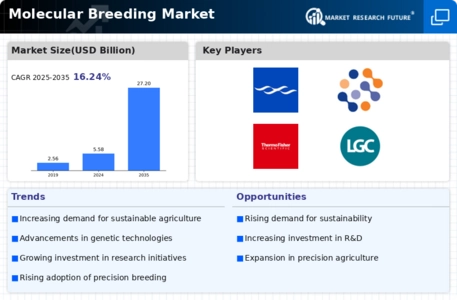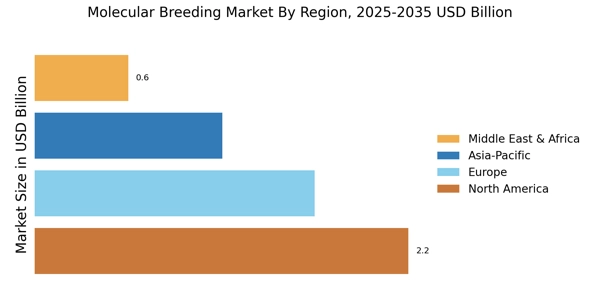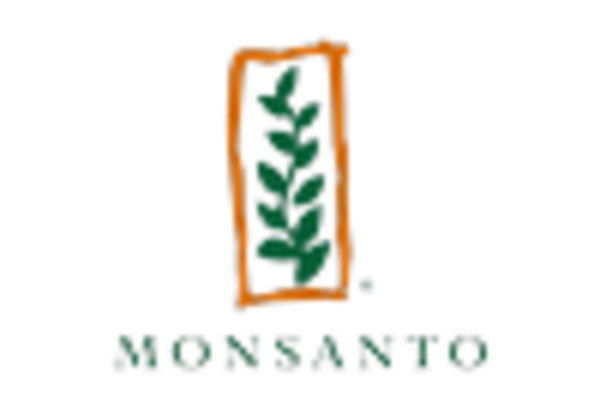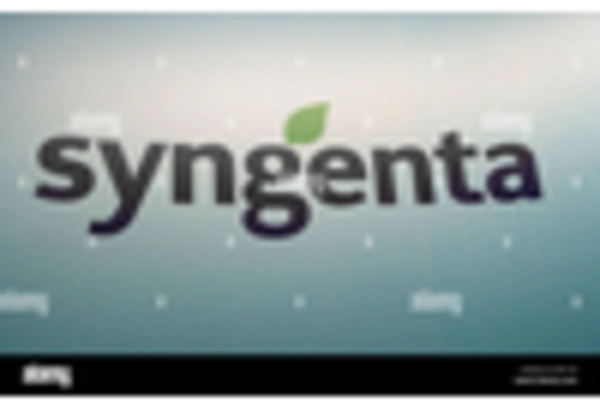Climate Change and Adaptation Strategies
The Molecular Breeding Market is increasingly focused on developing crop varieties that can withstand the adverse effects of climate change. As climate variability poses significant risks to agricultural productivity, molecular breeding offers a pathway to create resilient crops. Research indicates that molecularly bred crops can exhibit improved drought tolerance and disease resistance, which are critical for maintaining food security. The market for such adaptive varieties is expected to grow, with projections suggesting a 20% increase in demand for climate-resilient crops by 2028. This trend underscores the importance of molecular breeding in addressing the challenges posed by climate change.
Rising Global Population and Food Demand
The Molecular Breeding Market is significantly influenced by the rising global population, which is projected to reach approximately 9.7 billion by 2050. This demographic shift is driving an unprecedented demand for food, necessitating innovative agricultural practices. Molecular breeding offers a viable solution by enabling the development of high-yielding and resilient crop varieties. It is estimated that molecular breeding could contribute to a 50% increase in food production efficiency by 2030. Consequently, stakeholders in the agricultural sector are increasingly turning to molecular breeding techniques to meet the growing food demand, thereby propelling the Molecular Breeding Market forward.
Government Support and Funding Initiatives
The Molecular Breeding Market benefits from substantial government support and funding initiatives aimed at enhancing agricultural productivity. Various governments are recognizing the potential of molecular breeding to address food security and sustainability challenges. For instance, funding programs for research in biotechnology and molecular breeding are being established, with investments exceeding $1 billion in several regions. This financial backing not only fosters innovation but also encourages collaboration between public and private sectors. As a result, the Molecular Breeding Market is likely to expand, with increased research activities leading to the development of advanced breeding techniques and improved crop varieties.
Consumer Preferences for Sustainable Practices
The Molecular Breeding Market is responding to shifting consumer preferences towards sustainability and environmentally friendly practices. As consumers become more aware of the environmental impact of agriculture, there is a growing demand for sustainably produced food. Molecular breeding techniques can contribute to sustainable agriculture by reducing the need for chemical inputs and enhancing crop resilience. It is estimated that crops developed through molecular breeding can reduce pesticide use by up to 40%. This alignment with consumer values is likely to drive the adoption of molecular breeding practices, thereby fostering growth within the Molecular Breeding Market.
Technological Innovations in Molecular Breeding
The Molecular Breeding Market is experiencing a surge in technological innovations that enhance breeding efficiency and precision. Techniques such as CRISPR and genome editing are revolutionizing the way crops are developed, allowing for the rapid introduction of desirable traits. This technological advancement is projected to increase crop yields by up to 30% in the next decade, addressing food security challenges. Furthermore, the integration of bioinformatics and data analytics in breeding programs is streamlining the selection process, making it more data-driven and effective. As a result, the Molecular Breeding Market is likely to witness significant growth, with investments in research and development expected to reach billions of dollars by 2027.


















Leave a Comment